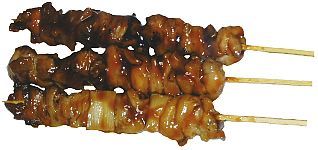Japanese superstitions are rooted in the culture and history of Japan and the Japanese people.
Superstitious beliefs are common in Japan; most have roots in Japan's history.
A number of Japanese superstitions have their basis in Japanese custom and culture and are meant to
teach lessons or serve as practical advice.
Some superstitions that are common in Japan have been imported from other cultures.
The unluckiness of a black cat crossing one's path is one notable example.
The Japanese also share superstitions with other Asian cultures, particularly the Chinese,
with whom they share significant historical and cultural ties. The unluckiness of the number
four is one such example, as the Japanese word for "four" sounds like the word for "death."
A significant portion of Japanese superstition is related to language. Numbers and objects which
have names that are homophones for words such as "death" and "suffering" are typically considered unlucky.
Other superstitions relate to the literal meanings of words. Another significant part of Japanese superstition
has its roots in ancient Japan's ancient Pagan, animist culture and regards living and natural things as having
certain powers or spirits. Thus, many Japanese superstitions involve beliefs about animals and depictions
of animals bringing about good or bad fortune.




